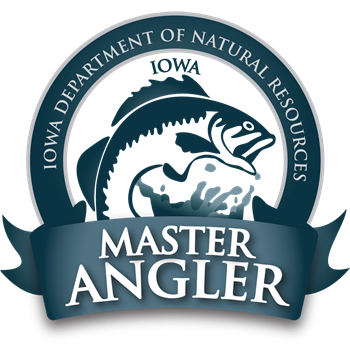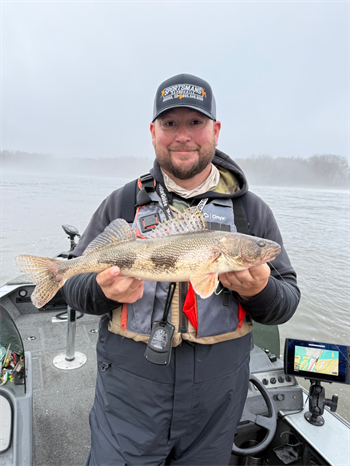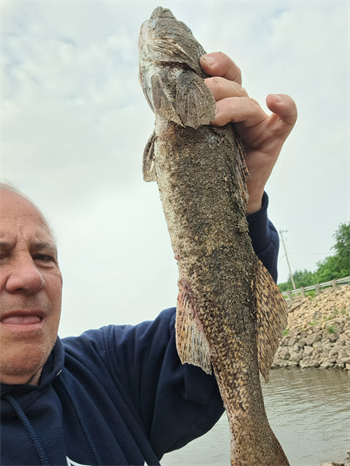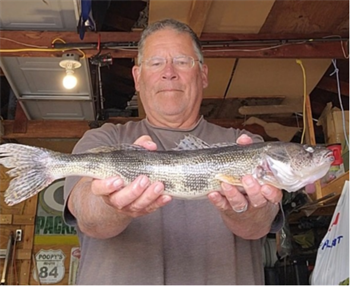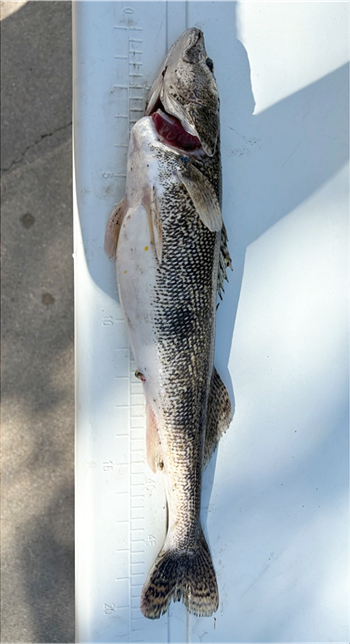Fish Iowa - Fish Species - Sauger
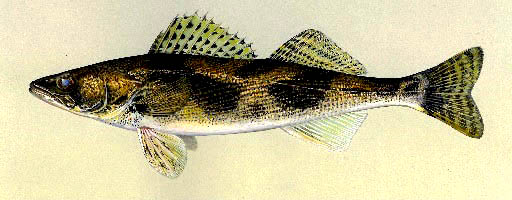
Characteristics
Long and cylindrical body, usually olive-gray. The back is crossed with 3 to 4 dark saddles, which extend down the sides. The white color of the belly extends to the tip of the tail, but the coloration does not spread out at the end of the tail and form a definite white tip as it does on Walleye. There are 2 or 3 rows of black dots on the first dorsal fin and a large black blotch at the base of the pectoral fin. There are 17 to 19 rays in the dorsal fin and 11 or 12 in the anal fin. The lateral line has 85 to 91 scales. About 15 rows of scales cover the cheeks. It does not reach the size of Walleye, seldom exceeding 2- to 4-pounds.
Foods
Adult Sauger eat mostly fish, crayfish, other crustaceans and insects. The young feed extensively on midge fly larvae and, as they become older, on immature and adult mayflies.
Expert Tip
Most sauger are caught near the bottom below a dam. Look for large instream structures that divert flow and you will find fish.
Details
The Sauger is not picky in its choice of clear waters and is often found in muddy rivers. It prefers larger rivers and spends much of its life there, except during the spawning season, when it ascends tributary streams or enters backwaters in search of suitable spawning habitat.
Spawning takes place in April through early May. Their spawning habits are very similar to Walleye. Eggs are deposited at random, fertilized and left unattended. Incubation is completed in 12 to 18 days depending on water temperature. Young Sauger reach about 2- to 4-inches long the first year and mature in their third or fourth year of life. It is a slower growing fish than Walleye. Most fish taken by anglers are less than 15-inches long.
Recent stream sampling information is available from Iowa DNR's biological monitoring and assessment program.
Distribution Map

Mostly limited to the Mississippi and Missouri rivers and the lower reaches of their tributaries.
See our most recent distribution data for this species on the Iowa DNR's Bionet application.
State Record(s)
Master Angler Catches
Fish Surveys
Tip: Click Species Length by Site, then use the dropdown to filter by fish species of interest.Where this Fish Is Found
Big Lake (Lansing)
Big Sioux River
Cedar River (Cedar Rapids to Moscow)
Cedar River (La Porte City to Cedar Rapids)
DeSoto Bend at DeSoto National Wildlife Refuge
Gimmel Lake
Iowa River (Coralville Lake to River Junction)
Iowa River (River Junction to Columbus Junction)
Little Sioux River (Correctionville to Missouri R)
Maquoketa River (below Monticello)
Martelle Lake
Missouri River (Council Bluffs to state line)
Missouri River (Little Sioux to Council Bluffs)
Missouri River (Sioux City to Little Sioux)
Pool 09, Mississippi River
Pool 11, Mississippi River
Pool 12, Mississippi River
Pool 13, Mississippi River
Pool 14, Mississippi River
Pool 15, Mississippi River
Pool 16, Mississippi River
Pool 17, Mississippi River
Pool 18, Mississippi River
Pool 19, Mississippi River
Wapsipinicon River (Oxford Junct to Mississippi R)
Wapsipinicon River (Troy Mills to Oxford Junction)
